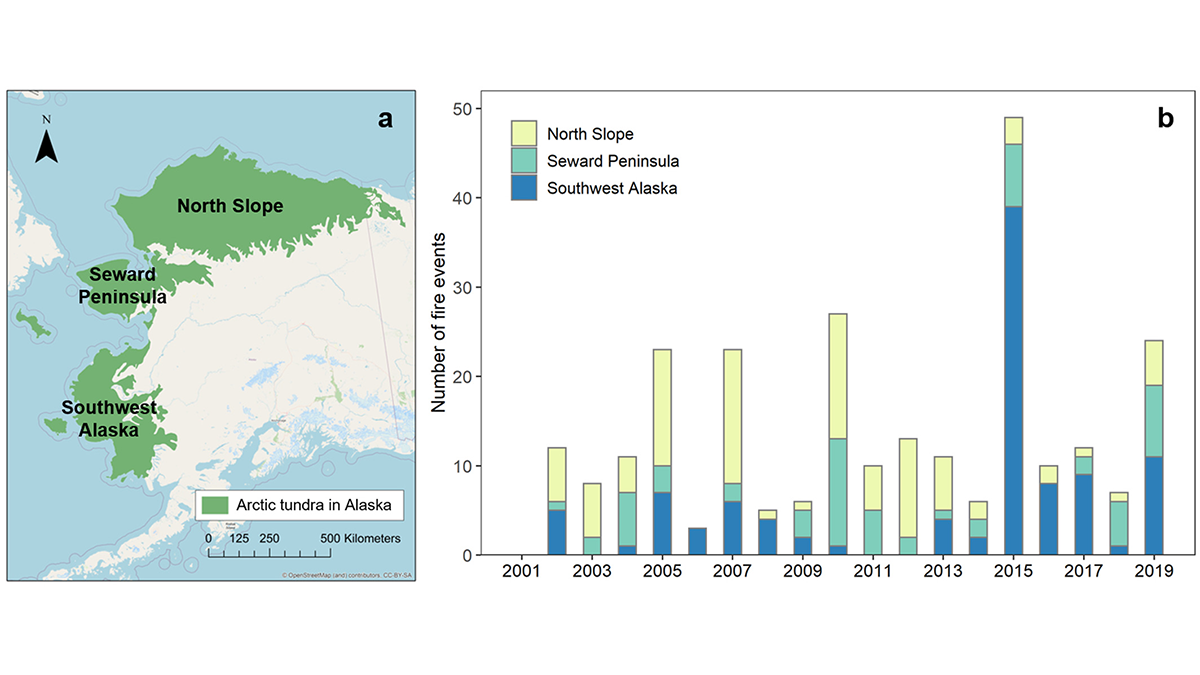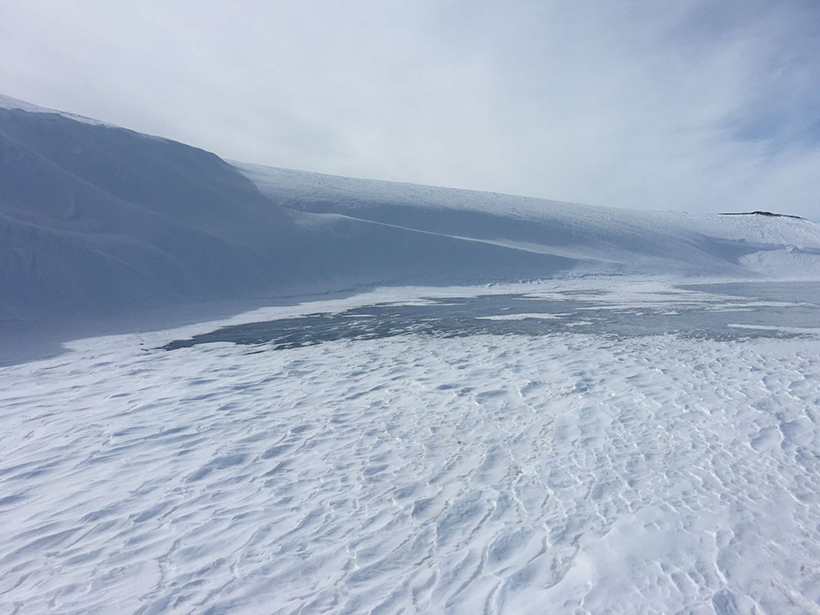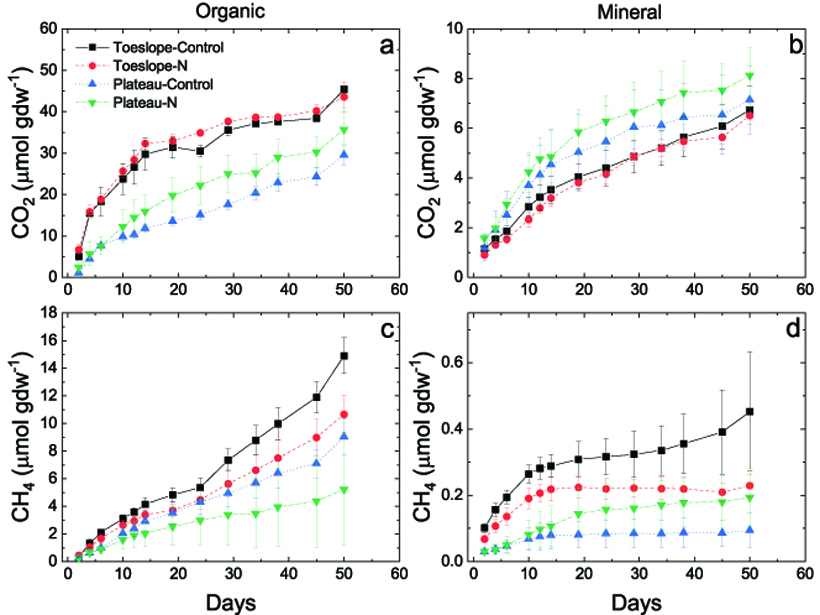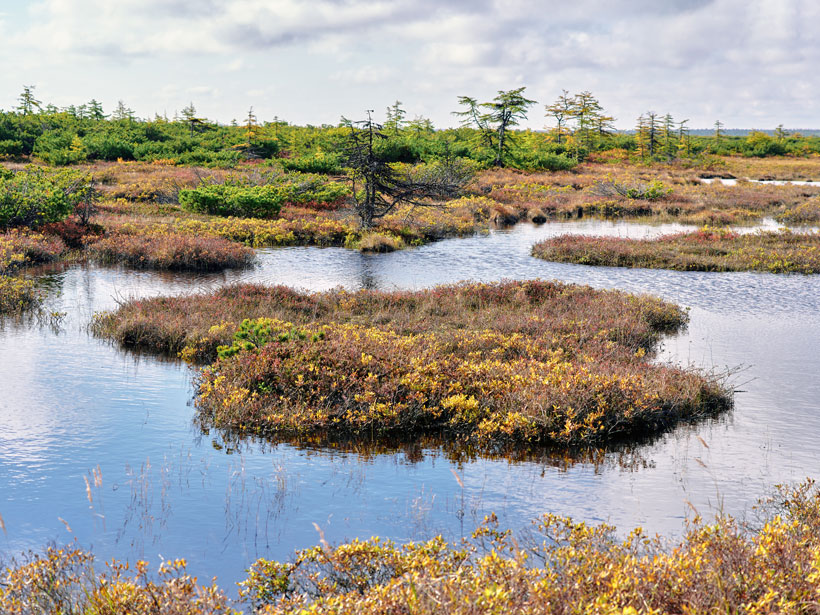Researchers compared caribou tracking data with satellite observations to learn whether snowpack conditions trigger the animals’ arduous annual migration.
tundra
Source or Sink? A Review of Permafrost’s Role in the Carbon Cycle
Understanding the role of permanently frozen soil, which covers a large portion of land in the Northern Hemisphere, is crucial to reaching global climate targets.
Herbivore Diversity Helps Maintain Arctic Tundra Diversity
A long-term experiment in southwestern Greenland reveals that the presence of musk oxen and caribou helps stave off declines in Arctic tundra diversity brought on by climate change.
Lightning in Alaskan Tundra Ignites Most Fires
Cloud-to-ground lightning is found to be the most important controller of wildfire occurrence in the Artic tundra of Alaska from 2001 to 2019.
Testing on the Tundra: NASA Snow Program Heads North
With infrastructure, experience, and a slice of the world’s largest snow biomes, Alaska is an essential research destination for NASA’s multiyear SnowEx campaign.
A Census of Snowdrifts in Northern Alaska
Snowdrifts prove less ephemeral than they might seem, occurring in the same places year after year.
Drones Help Bridge the Gaps in Assessing Global Change
New instruments in the research tool kit bolster scientific understanding of the ecology of a greening Arctic.
Downhill from Here: Landscape Positions and Greenhouse Emissions
In comparing soils from two tundra wetland landscape positions, landscape position is found to matter, and toeslopes are associated with higher greenhouse gas production.
Turning the Arctic Brown
For a generation, the tundra has seen an increasing growth of vegetation, a process known as Arctic greening. A more accurate term might be “Arctic browning.”
Methane-Releasing Tundra Soils Freezing Later Each Year
Scientists find links between delayed freezing of Alaskan soils and higher atmospheric methane concentrations during the cold season.










